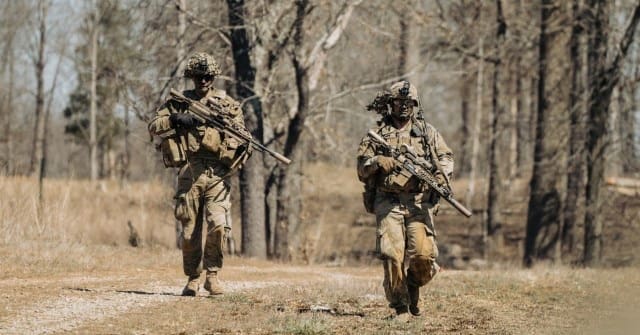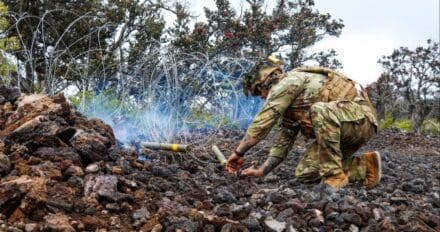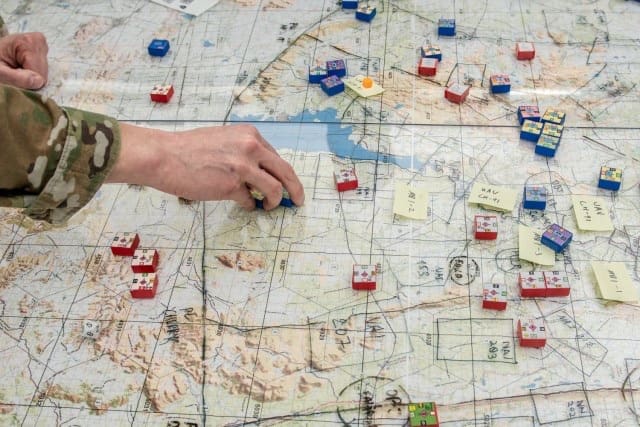Fort Campbell Soldiers Validate Next Generation Squad Weapon System Through Live-Fire Exercise

FORT CAMPBELL, Ky. Soldiers from the 1st Mobile Brigade Combat Team of the 101st Airborne Division (Air Assault) recently engaged in a significant Combined Arms Live-Fire Exercise (CALFEX) at Fort Campbell. This exercise featured the utilization of the M7 rifle and M250 automatic rifle, marking a pivotal step in the validation of the Next Generation Squad Weapon (NGSW) platform.
The NGSW is being developed to replace the long-standing M4 and M249 rifles, introducing advanced capabilities that aim to reshape small-unit combat tactics. With enhanced range, greater lethality, and cutting-edge optics, this new system is designed to meet the demands of modern warfare. The CALFEX provided a high-tempo environment to rigorously assess the performance of the NGSW under realistic conditions, integrating various combined arms elements such as dismounted infantry, aviation support, and indirect fire assistance.
Staff Sgt. Caleb Harris, a Platoon Sergeant with the 2nd Battalion, 327th Infantry Regiment, shared his observations regarding the reliability of the M7 during the exercise. My first impression was how reliable the M7 was we didnt experience any malfunctions throughout the entire CALFEX, he remarked. This reliability allowed the teams to maintain an aggressive training tempo, adapting their fire and maneuvers without the interruptions often associated with older weapon systems.
Moreover, the exercise provided an opportunity for fire teams to explore and implement new bounding techniques and sectors of fire. This was essential to ensure that the improved stopping power of both the M7 and M250 rifles was effectively employed during offensive and defensive maneuvers. These tactical evolutions underscore the critical importance of early and continuous integration of modern capabilities into the mission planning process at even the lowest echelons of command.
The M7's enhanced range and improved ergonomics offered greater flexibility in small-unit leadership and fire team control. Spc. Brandon Horvath from the 1st Battalion, 506th Infantry Regiment noted, As team leader, I was able to direct my guys to engage targets at extended distances while taking a brief tactical pause myself not off the line completely, but just enough to reposition and get more accurate shots from better cover. He emphasized that the rifles design significantly contributed to improved combat flow, particularly in high-pressure situations.
I really like the side-charging handle. Internally, with the buffer system, its a lot easier for me to charge the weapon from the side when repositioning it just makes transitions smoother, Horvath added, highlighting the operational advantages provided by the modern design of the NGSW.
The integration of the NGSW into team-level tactics has reinforced the necessity for adaptable employment strategies, especially in open terrains or against fortified enemy positions. This capability allows Soldiers to shape the battlefield from a distance, enhancing their operational effectiveness.
Spc. Tristan Mann, also from the 2nd Battalion, 327th Infantry Regiment, detailed the practical advantages of the increased range during tactical movements. Being able to engage from farther out gave us more control over the fight. It changed how we moved, when we closed in, and how we set our fields of fire, he explained, emphasizing the system's impact on combat dynamics.
Additionally, Cpt. Evan Myers from the 1st Battalion, 327th Infantry Regiment, commented on the newfound control and effectiveness provided by the M250 during the exercise. The 250 has a semi-automatic mode, which makes it easier to control a single shot or two rounds instead of firing 6-8 rounds, he noted. The suppressor reduces the muzzle flash, which is a huge advantage for maintaining concealment in low-light engagements. These observations underscore how the NGSW enhances both precision and survivability on contemporary battlefields.
While the firepower and ergonomic features of the NGSW have been widely commended, Soldiers have also pointed out the importance of assessing how this new weapon system integrates with current equipment and sustainment practices. The M7 is slightly heavier than the M4, particularly when used with the larger 6.8mm magazines. It definitely feels a bit heavier on the kit, especially once youre carrying a full combat load, Mann acknowledged. But the extra weight didnt slow us down if anything, it made every shot count more.
Despite the overwhelmingly positive initial feedback, military leaders have recognized that time and sustained training are crucial to thoroughly validating the long-term value of the NGSW. The more time we get to train with it, the more we will get to see how it really works, stated 1st Sgt. William Melko from the 1st Battalion, 327th Infantry Regiment. His comments reflect a balanced view shared by many senior leaders within the Army: while the NGSW is showing great potential, true validation will only come through prolonged exposure, empirical data, and real-world experience across various military formations.
The incorporation of the NGSW into the CALFEX represents a significant milestone in the Armys ongoing modernization initiatives. Throughout the stages of planning, execution, and sustainment, both the M7 and M250 have demonstrated reliability, lethality, and tactical transformation capabilities. Looking forward, the 1st Mobile Brigade Combat Team is preparing for its upcoming rotation at the Joint Readiness Training Center, where the NGSW will be further implemented and evaluated in a simulated operational environment. This continued usage will offer invaluable feedback, ensuring that the system is not only technologically sound but also operationally effective under realistic combat conditions.
By SGT Marisol Romo Franco













